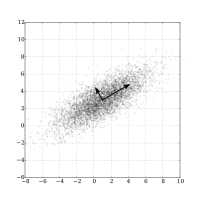
Photo from wikipedia
Optical flow cytometry is used as the gold standard in single cell function diagnostics with the drawback of involving high complexity and operator costs. Magnetic flow cytometers try to overcome… Click to show full abstract
Optical flow cytometry is used as the gold standard in single cell function diagnostics with the drawback of involving high complexity and operator costs. Magnetic flow cytometers try to overcome this problem by replacing optical labeling with magnetic nanoparticles to assign each cell a magnetic fingerprint. This allows operators to obtain rich cell information from a biological sample with minimal sample preparation at near in-vivo conditions in a decentralized environment. A central task in flow cytometry is the determination of cell concentrations and cell parameters, e.g. hydrodynamic diameter. For the acquisition of this information, signal processing is an essential component. Previous approaches mainly focus on the processing of one-cell signals, leaving out superimposed signals originating from cells passing the magnetic sensors in close proximity. In this work, we present a framework for joint cell/particle detection and analysis, which is capable of processing one-cell as well as multi-cell signals. We employ deep learning and compressive sensing in this approach, which involves the minimization of an adaptive norm. We evaluate our method on simulated and experimental signals, the latter being obtained with polymer microparticles. Our results show that the framework is capable of counting cells with a relative error smaller than 2 %. Inference of cell parameters works reliably at both low and high noise levels.
Journal Title: IEEE Transactions on Biomedical Engineering
Year Published: 2022
Link to full text (if available)
Share on Social Media: Sign Up to like & get
recommendations!